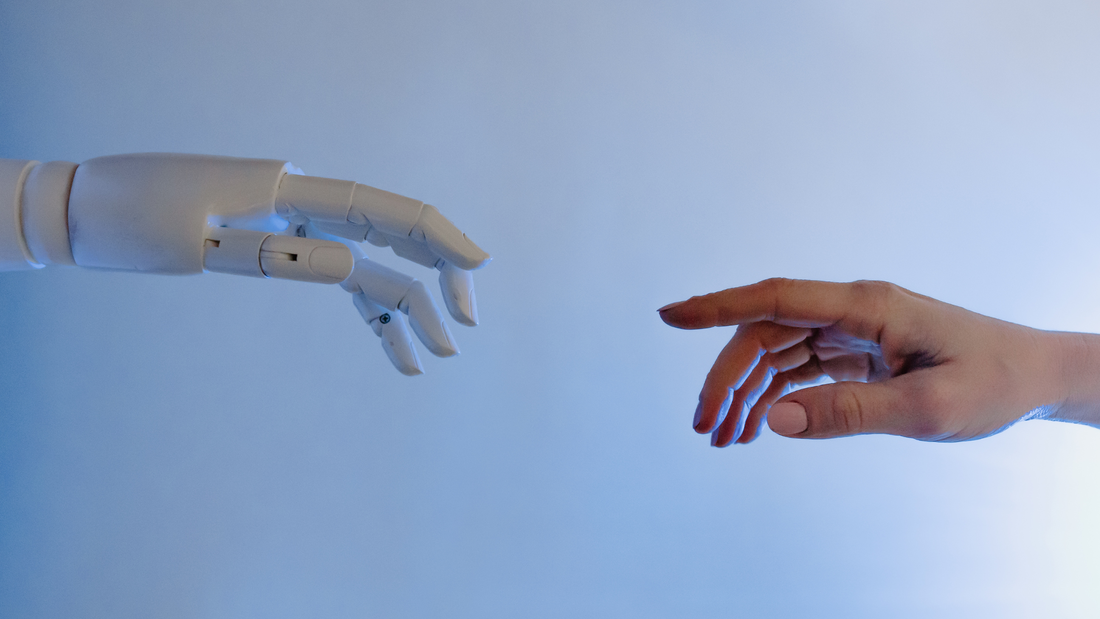What Is AI? What Can It Do? What Can’t It Do?
AI has exploded into the workplace. Every day there are new AI tools claiming to make our jobs faster and easier – or replace our jobs altogether. It’s nearly impossible to keep up with them, let alone understand what they are and how they work. What are we supposed to do when it seems like everything touts itself as “AI-powered” or “using machine learning”? How can we keep up – or better yet – leverage these tools so we’re more successful? The first step is to understand what AI is and what it is NOT.
What Is AI and How Is It Different from What We’ve Been Using?
Artificial intelligence (AI) is result of trying to create machines that can think in a way that mimics human thought.
The basis of traditional computer logic is the If, Then statement. If a is true, then do x. For example, "If the user clicks ENTER, then add a line break."
Computer programmers took that simple concept and expand on it by adding more qualifiers (If a and b are true, then do x; If a is false, do x; etc.) and by putting many such statements into a series. The logic could get very complicated, but ultimately it was doing exactly what it was programmed to do by a person.
When it comes to AI, things happen a little differently. Take, for example, machine learning. Machine learning is a type of AI where the goal is to get the computer to write its own code. Using the basics of machine logic from above, a programmer creates a program that can look at a lot of data, make up its own logic, then create an output. Then another part of the program, that a human wrote, evaluates the output against more data and scores it. Parts that score well are kept, and parts that score poorly are scrapped or rewritten. The process is repeated countless times, until the programmer is happy with the output.
The programmer now has a choice, tell the program to stop learning, or let it continue to adjust itself as it is being used by the end user. A program that is frozen in place will not continue to evolve and will not change its logic from its initial training. Its ability to adapt to new information will be more limited. A program that continues to learn, however, faces a different problem: the end user. Since the program uses user data as the new training data, the program can evolve in unintended ways. One chatbot famously learned to swear and make racist and inflammatory comments after learning from its interactions with internet users.
Unlike traditional programming, AI can apply its logic to new situations that it was never told how to respond to. It does so by looking for patterns in the data that are similar to ones it was trained on and creating a response based on how it was trained to act when receiving those inputs. The result is that an AI chatbot doesn’t have to be programmed with a response to every possible series of words someone could say to it.
What CAN AI Do?
AI can review and respond to a lot of data a lot more quickly than a person can. It can also find patterns that people can’t because we are unable to hold huge sums of data in our heads and process it all. As a result, it is being used to review large batches of medical images and diagnostics, detect fraud by reviewing countless bank transactions across the globe, and acting as automatic helplines for customers.
One of the most striking things it has started doing, however, is creating. AI tools like Stable Diffusion and ChatGPT are being used to create in a way that we have always thought of as human. It leaves us wondering, if AI can create something new, something never seen or done before, what can’t it do?
What CAN’T AI Do?
When you start using AI tools, it becomes clear that AI can’t understand meaning or think in any appreciable way. An AI stock trading tool doesn’t understand what makes a good company or the greater socio-economic situation in the world. It just takes the data its given, makes the changes that worked in similar situations in its training data, and gives an output.
The result is that AI tools can’t tell you if someone has cancer or if fraud is being committed, it can only flag something as fitting a pattern. It still needs a human to evaluate the context, the unique situation, to see if the results are accurate. When creating art or writing, the tools will heavily plagiarize from the data they were trained on, because those are the patterns they were told to replicate. With enough data from varied sources, it might be impossible to tell who or what is being copied, but it is still just adjusting an input based on its training data.
OK, So How Can I Use AI Tools Effectively?
In future articles, we will look more closely at what kinds of AI tools are available, how to use them, and their strengths and weaknesses.
Don’t want to wait for the next article? Or want an experienced team to help you create better content? Then shoot us an email.


